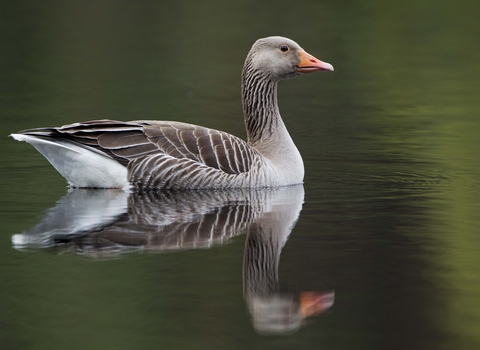
Greylag goose © Mark Hamblin/2020VISION
Greylag goose
The greylag goose can be easily spotted around parks, gravel pits and river valleys, but these populations tend to be semi-tame, having been reintroduced. Truly wild populations can be found in Scotland.
Scientific name
Anser anserWhen to see
January to DecemberSpecies information
Category
Statistics
Length: 76-89cmWingspan: 1.6m
Weight: 3-4kg
Average lifespan: 8 years
Classified in the UK as Amber under the Birds of Conservation Concern 5: the Red List for Birds (2021). Protected in the UK under the Wildlife and Countryside Act, 1981.
About
Our commonest native goose, the greylag goose can be very territorial while nesting, chasing other geese and large birds away from its nesting site. Greylag geese become sociable again once the chicks have hatched, with several families of goslings sometimes grouping together. Greylag geese have short bills and prefer to graze pasture and meadows where cattle or sheep are grazing. They will also take grain, root crops and leafy vegetation.How to identify
The greylag goose is a large, pale grey goose with pink legs and an orange bill.Distribution
Wild birds nest in Scotland, while others come from Iceland to spend the winter. Feral birds nest throughout the country on lakes, reservoirs and gravel pits.Did you know?
The wild greylag goose is the ancestor of most domesticated, farmyard geese. It was traditionally eaten at Michaelmas (the 29th September: a day for celebrating the archangel St. Michael), and was cooked with port and mustard.Watch
Greylag Goose (https://vimeo.com/444874606)
Greylag Goose by John Bridges
